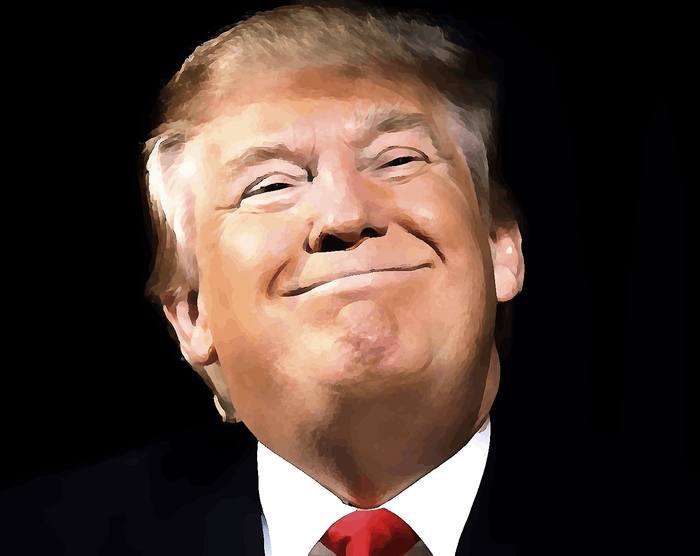
As presidents go, Donald Trump is unlikely to be remembered for his principles. But he has one. In Fear: Trump in the White House, Bob Woodward describes how the president wrote, “Trade is bad”, in the margins of a draft speech. When his economic adviser Gary Cohn asked why he believed this, Trump replied: “I just do. I’ve had these views for 30 years.”
This is true. In 1987 Trump published an open letter “To the American people” as a full-page newspaper ad. “It’s time for us to end our vast deficits,” he declared, “by making Japan, and others who can afford it, pay.”
In an interview with The Wall Street Journal in 1999, Trump speculated about waging a trade war against Japan. “It’s not going to last very long,” he explained, “because Japan, if they don’t sell to this country, they go out of business, OK?”
He has been nothing if not consistent — except, of course, that Japan has been replaced by China as the principal (though by no means the only) target of Trump’s protectionist policy. On the campaign trail in 2016, he repeatedly threatened to impose a 45% tariff on all Chinese imports. Back then, the journalist Salena Zito memorably observed that “the press takes [Trump] literally, but not seriously; his supporters take him seriously, but not literally.” On trade we should have taken him both seriously and literally.
Last year Trump imposed a succession of tariffs on imports, beginning with washing machines and solar products and then targeting steel and aluminium. He also imposed tariffs on Chinese imports worth $200bn (£157bn). Earlier this month, just when trade negotiations between Washington and Beijing seemed close to a conclusion, Trump carried out his threat to hike those tariffs from 10% to 25%. He has since begun the process to extend the 25% tariff to nearly all US imports from China. As happened last year, China has retaliated by slapping tariffs on US goods.
The president’s song remains the same. “Tariffs will bring in FAR MORE wealth to our Country than even a phenomenal deal of the traditional kind,” he tweeted on May 10. “An easy way to avoid Tariffs?” he asked a day later. “Make or produce your goods and products in the good old USA. It’s very simple!” And: “We will be taking in Tens of Billions of Dollars in Tariffs from China.”
The economics profession — and nearly everyone it has taught in the past 50 years — begs to differ. One recent paper, written before this year’s escalation of the trade war, calculated that “the full incidence of the tariff falls on domestic consumers, with a reduction in US real income of $1.4bn per month by the end of 2018.”
Not only do the tariffs raise the prices American consumers pay; American manufacturers and farmers are losing out as a result of China’s retaliation. Soya bean exports to China, for example, have plummeted. With opinion polls suggesting an increase in public support for free trade agreements since 2016, Trump’s strategy looks economically and politically suicidal.
Yet there is method in his madness.
If tariffs really are so self-destructive, the economic history of the United States presents something of a puzzle. From its very inception (a revolt against British control of, among other things, import duties), the American republic relied on tariffs as a source of revenue and as protection for its own nascent industries. As exporters of cotton, the Southern Democrats were the free traders; the manufacturers of the North, first as Whigs, then as Republicans, favoured an “American System” based on protection.
Though many other factors contributed to making America great, tariffs certainly did nothing to slow the rapid growth of the US economy in the 19th century. By 1872 it was the world’s biggest. Meanwhile, tariffs had become a domestic-political stick with which (as in the case of the 1828 Tariff of Abominations) the North beat the South. Later it was tariffs that divided the east of the country from the west.
Economists tend to remember with horror the 1930 Smoot–Hawley bill, which raised tariffs just as the world was tipping into depression. But the new rates were only slightly higher than those that had been imposed in 1922. It was not until the later stages of the Second World War that the United States finally committed itself to free trade, and only gradually thereafter — with a major hiccup in the 1970s — that average duties were lowered.
For roughly 150 years, in other words, the United States was a protectionist power. Tariffs were a large part of what the nation’s elected representatives fought over on Capitol Hill. The era of free trade has been precisely half as long. If it began in 1941, with the Atlantic Charter, it ended with the election of Donald Trump 75 years later.
Trump’s trade war is doubly political. Primarily, as I have argued before, it is designed to check China’s rise, and — though a blunt instrument — it is undoubtedly causing significantly more pain to China than to the US. Taking account of the gains to US producers and the government (in the form of revenue), the net cost of tariffs to the United States is in fact just $7.8bn a year — 0.04% of GDP.
True, the return to protectionism may also cost shareholders some of their wealth. Many big corporations will take a hit as they reconfigure their global supply chains. But the Chinese leadership miscalculated badly in thinking that it could make last-minute improvements to its trade deal with Trump. It thought he would make concessions rather than see US stocks take a hit. Wrong. Trump isn’t going to make a bad deal with China when he can simply lean on the Federal Reserve to “match” Chinese monetary policy with interest rate cuts.
The second political dimension of Trump’s tariffs is — as is always true of tariffs — domestic. Sure, there are losers. But at the last census farmers amounted to just 1% of the US population. And the principal losers, a recent study shows, are “workers in heavily Republican counties”. They don’t seem very likely to vote for a Democrat — especially if the nominee is Joe Biden, who thinks the Chinese are “not bad folks” and “not competition for us”.
Americans agree with Trump, not Biden. In 2018, only 38% of Americans had a favourable view of China, down from 44% the previous year. And 58% worried more about China’s economic strength than its military strength. True, not everyone thinks that tariffs are the way to counter China’s rise; but Republicans clearly do, even if Democrats don’t.
Republicans up for re-election next year are watching carefully how the trade war plays in their states. Right now, it’s playing well. As one red-state political veteran put it, “If we can’t take a few tariffs in the short run, how can we ever beat China in the long run?”
The widespread perception of Donald Trump as unprincipled is wrong. He has one principle: the protection principle. It may not be great economics. But history suggests it could be pretty good politics.
(COMMENT, BELOW)
Niall Ferguson's latest book is "The Square and the Tower: Networks and Power from the Freemasons to Facebook." (Buy it at a 35% discount by clicking here or order in KINDLE edition at a 50% discount by clicking here). He is the Milbank Family Senior Fellow at the Hoover Institution, Stanford University, and a senior fellow of the Center for European Studies, Harvard, where he served for twelve years as the Laurence A. Tisch Professor of History.


 Contact The Editor
Contact The Editor
 Articles By This Author
Articles By This Author